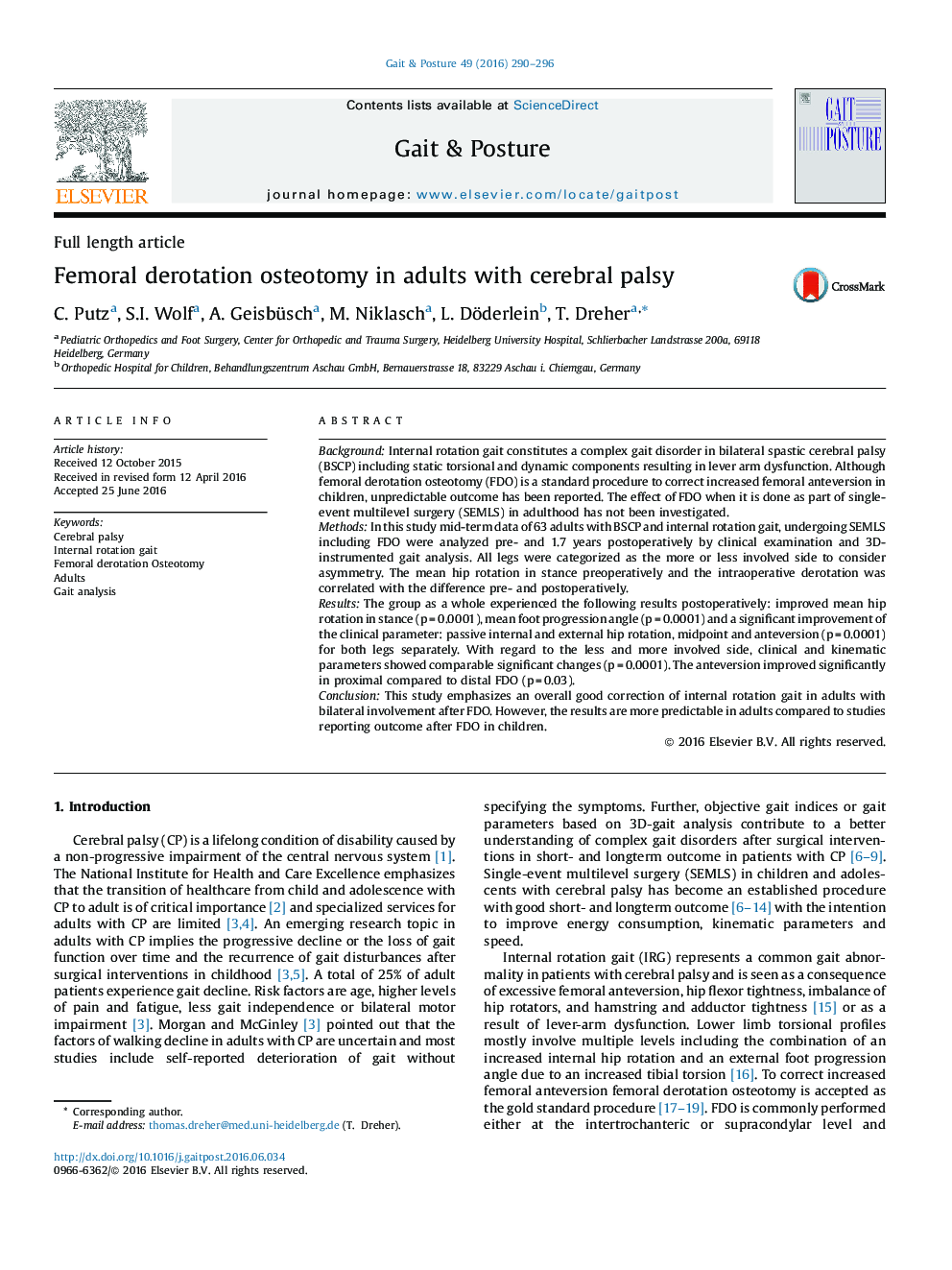| Article ID | Journal | Published Year | Pages | File Type |
|---|---|---|---|---|
| 6205480 | Gait & Posture | 2016 | 7 Pages |
â¢Clinical and kinematic parameter show correction of internal gait pattern after FDO.â¢The outcome in adults might be more predictable compared to children with CP.â¢Rehabilitation time in adults is longer than for children.â¢Careful selection and preoperative counseling in adults with CP is mandatory.
BackgroundInternal rotation gait constitutes a complex gait disorder in bilateral spastic cerebral palsy (BSCP) including static torsional and dynamic components resulting in lever arm dysfunction. Although femoral derotation osteotomy (FDO) is a standard procedure to correct increased femoral anteversion in children, unpredictable outcome has been reported. The effect of FDO when it is done as part of single-event multilevel surgery (SEMLS) in adulthood has not been investigated.MethodsIn this study mid-term data of 63 adults with BSCP and internal rotation gait, undergoing SEMLS including FDO were analyzed pre- and 1.7 years postoperatively by clinical examination and 3D-instrumented gait analysis. All legs were categorized as the more or less involved side to consider asymmetry. The mean hip rotation in stance preoperatively and the intraoperative derotation was correlated with the difference pre- and postoperatively.ResultsThe group as a whole experienced the following results postoperatively: improved mean hip rotation in stance (p = 0.0001), mean foot progression angle (p = 0.0001) and a significant improvement of the clinical parameter: passive internal and external hip rotation, midpoint and anteversion (p = 0.0001) for both legs separately. With regard to the less and more involved side, clinical and kinematic parameters showed comparable significant changes (p = 0.0001). The anteversion improved significantly in proximal compared to distal FDO (p = 0.03).ConclusionThis study emphasizes an overall good correction of internal rotation gait in adults with bilateral involvement after FDO. However, the results are more predictable in adults compared to studies reporting outcome after FDO in children.
